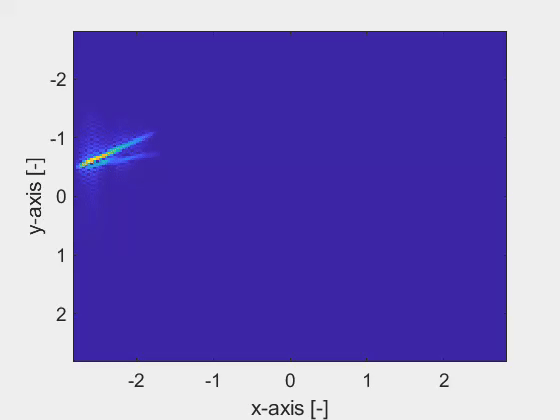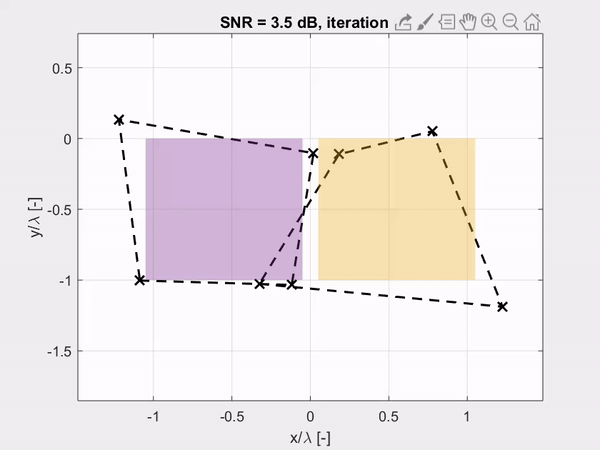
Inverse scattering for wafer metrology focuses on retrieving the geometrical and material properties of structures by analyzing their electromagnetic response. Inversion plays a key role in wafer metrology in which parts of the structures on a wafer are monitored as a means to detect possible production errors.

We have developed a noise-robust electromagnetic inversion algorithm, based on the spatial spectral Maxwell solver, to accurately retrieve the geometrical and material properties of finite three-dimensional dielectric objects in a planarly layered background medium. The spatial spectral Maxwell solver employs a Gabor-frame expansion, which yields a meshless definition of the objects. In other words, the resolution of retrieving the fine geometrical details of an object is not tied to a grid. An example of a Gabor-frame expanded object is shown in the first figure, which shows the top-view of an object with its cross-section shaped as a kingfisher. The second figure shows the analytic derivative with respect to the tip of the kingfisher’s beak, acting as a parameter. This derivative is readily obtained owing to the Gabor-frame expansion in the spatial spectral Maxwell solver.

The combination of the spatial spectral Maxwell solver and the derivatives of the parametrized objects leads to a noise-robust estimation of the fine geometrical details of an object as shown by the last animation. Here, the corner points of the cross-section of the objects are accurately retrieved with nanometer precision within only a few iterations of the inversion algorithm, despite the high-noise levels.